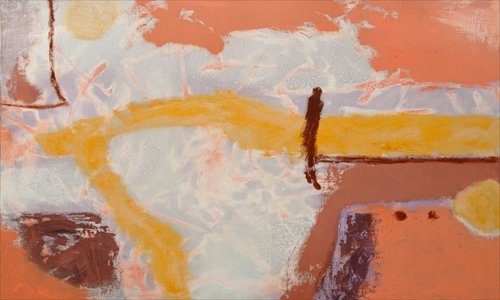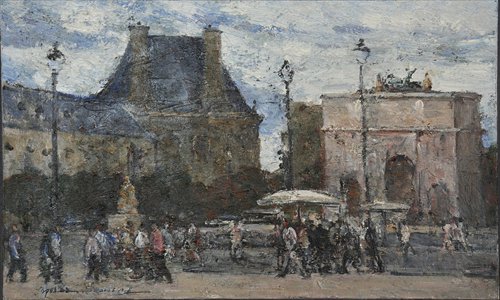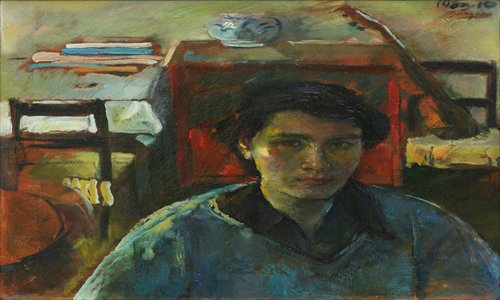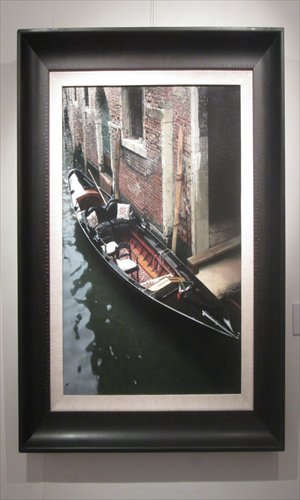The Oil Rush

As one of the first Chinese cities to open its doors to the West, Shanghai has always been on the frontline of the interaction between Eastern and Western culture and the arts. And of all the imported art forms, oil painting is one that has notably become rooted in the city and has blossomed.
And recently, the Zhu Qizhan Art Museum, which is known for its leading role in co-organizing the annual Shanghai New Ink Painiting Art Exhibition since 2005, invited a number of notable oil painting artists to display their own important pieces.
On show are some 50 works by pioneers in the field such as Liu Haisu (1896-1994), Guan Liang (1900-1986), and Zhu Qizhan (1892-1996), as well as contemporary artists such as Liao Jiongmo, Qiu Ruimin, Yu Xiaofu, Jiang Jianzhong and Zhao Yifu.
Spiritual pursuits
Xieyi in Chinese literally means to express emotion through cultivating a certain artistic context in an artwork, and this has always been a significant characteristic of traditional Chinese ink and wash painting. And xieyi highlights freehand brushwork in contrast to the more typical, elaborate style, and expresses the artist's emotion or spiritual pursuits through concise images on the paper.
"How artists use Western media to express distinctly Chinese spiritual pursuits is our main goal," said curator Huang Yiqian of the exhibition which is entitled Jiashang Xieyi. Jiashang refers to the "easel" which signifies the Western media, while xieyi indicates the Chinese artists' aesthetic sensibility.
"Compared with the Chinese xieyi, Western impressionism focuses more on the perception of objective things and landscapes, while Western expressionism emphasizes the expression of the emotions," said participating artist Qiu Ruimin, who is also the deputy president of the Shanghai Arts Association.
"In Shanghai you have different styles of artists making dedicated efforts in oil painting, and the exhibition offers a perspective of their work. Although it's small in scale, it offers the opportunity to look deeply into the research and study of xieyi-styled oil painting," added Qiu.
Visitors can appreciate paintings of natural scenery, still lives, and figurative portraits.

Oil painting masters
"Although the city is not as famous as Beijing, Guangzhou or Sichuan Province for its oil painting circles, Shanghai has never lacked great oil painting artists," Huang told the Global Times.
Back in the early 20th century, Liu Haisu, Lin Fengmian (1900-1991), Chen Baoyi (1893-1945), Zhu Qizhan and Wu Dayu (1903-1988), among others, expanded their artistic output to include oil paintings. The first academy of fine arts in China, the Shanghai Fine Arts College, founded in 1912, launched oil painting courses and influenced a number of artists of that time. Shanghai witnessed the thriving of several painting clubs led by oil painters and the city became one of the most important oil painting bases in China up until the break out of the War of Resistance against Japanese Aggression (1937-45).
From 1949 up to the end of the 1970s, however, Shanghai oil painters were only allowed to focus on "political and social content" in their paintings. Many of them, however, continued to pursue their own artistic works in secret, remaining true to their ethos of expressing personal feelings.
An exhibition in 1979 in Huangpu district marked the unveiling of a new era for Shanghai artists. Painting Exhibition of Twelve Artists was the first privately funded exhibition in China since 1949, and it showcased the still lives, landscapes and "hidden" works that were created during the Cultural Revolution (1966-76).
"So basically, the development of xieyi oil paintings has never really stopped in the city," said Qiu. "And since the 1990s, there are many artists who take the topic more seriously than ever, and employ more new modes of expression in their paintings."

Shanghai style
An old Chinese saying goes: yifang shuitu yang yifang ren, which means "people living in different places have different characters," and Shanghai artists with their unique characteristics have certainly distinguished themselves from artists in other parts of the country.
"Usually when a certain style of painting wins a national prize, there will be many artists who simply follow this trend and imitate the award-winning piece, but Shanghai artists rarely display this tendency," Qiu told the Global Times. "They care more about their personal feelings, and enjoy making every effort to satisfy themselves during the creative process."
Huang agreed with Qiu on this point. "Also you can feel that Shanghai artists are more bourgeois, and their works are more yangqi, meaning cosmopolitan," added Huang.
Date: Until January 20, 2013, 9:30 am to 4:30 pm (closed on Monday)
Venue: Zhu Qizhan Art Museum
朱屺瞻艺术馆
Address: 580 Ouyang Road
欧阳路580号
Admission: Free
Call 5671-0741 for details

